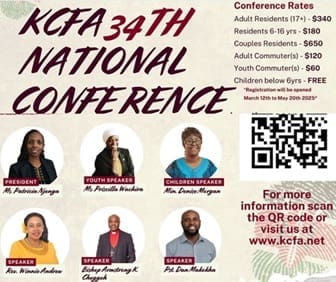Nairobi The Haunted Freemason City-Freemason buildings that define Nairobi

He would tell me that around 1901, there was a man by the name John Ainsworth, who was the Nairobi sub commissioner or an equivalent of a District commissioner or Provincial Commissioner and the natives had nicknamed him “Lord Muthaiga”.
He gained the nickname due to his brave tendencies of disrupting Kikuyu medicine men who had made Karura forest their meeting point as they considered it a sacred forest according to the Kikuyu beliefs.
In this forest, all types of traditional cleansing ceremonies took place and it was still in the same forest that healing medicines were available and the most effective was obtained from a huge tree whose bark was a cure. They nicknamed it the “muthaiga” tree.
It was not the only one as all other poisons used by same medicine men were obtained from the same forest and therefore, the feared men would whisper to each other so that natives would not know their secrets.. “Ndagira muthaiga hau karura”. I have gone for “urogi” (poison) at “muthaiga”.
In Kikuyu language the word muthaiga is singular and “mithaiga” is the plural but both are something to do with drugs good or lethal ones.
The medicine men were believed to heal any ailment and if only Karen Blixen had paid attention to them, the cure for the dreaded syphilis that made her suffer for many years, would maybe have been found in that same sacred forest.
All the same, the white man would never have believed stories of animal skin dressed dirty traditional healers and would chase and then destroy their paraphernalia or even kill them.
She therefore had to suffer for many years due to the fact that Dr Alexander Fleming had not yet discovered penicillin which according to my father, had already been discovered by the Maasai. They would simply let bread to grow mounds for two weeks and then eat it with plain water and ailments like gonorrhea that surfaced after World war one, would easily be treated.
When the natives came to know that the white man would even dare fight the most feared medicine man and traditional healer by the name “Karuri wa Gagure”, they feared the man who was already honored as a Lord by the queen and with time nicknamed him Lord “Muthaiga”.
At the Muthaiga giant roundabout, my father would narrate to me that it is the spot the man was later buried.,,.. By then my father was still a teenager just before Mau Mau uprising. (Whether the grave was Bakers or someone else is still pending as I have requested historians to check for me but for now, we go by my father words to the effect that it is the spot Ainsworth is buried with a name “Lord Muthaiga)…..or to simplify, let us put it… “a famous Freemason of high ranking was buried there”.
Lord Muthaiga or whoever was buried there, must have been a Freemason as symbolized by the obelisk monumental grave stone (used by all masons) that was visible at Muthaiga roundabout (if the road system has not moved it, but the year I left Kenya in 2000, it was still there)
Lord Ainsworth is the one who made many white settlers to start building huge mansions near Muthaiga by giving them free land and in short he greatly helped to start building the present day Nairobi City.
He would not entertain any Africans for he even had to chase an enterprising lady called Wanjiru Rara that had settled near where boulevard hotel stands today but was eventually chased and given only 12 acres of land in Karai area.
Ainsworth may have been a land grabber for he too allocated himself land and constructed an all white hotel that he named Ainsworth hotel.
Cost of land by then was not much as Grogan would later easily put up the all white hospital that still have some Freemason architectural influence. He named it after his wife Gertrude maybe as a way of expressing the further struggle he had to go through to fully win her heart. It is today a famous children hospital called Getrude Children Hospital.
Grogan was a shrewd businessman who used to own the area today commonly known as Grogan, but that was not all for he still owned more vast land that extended all the way to Chiromo and Nairobi University.

Maybe it is also fair at this instant to give a strange story of how enterprising Grogan met his wife Gertrude and this is the short incredible story of courage and sheer determination as copied:
Wart Scott Grogan (1874–1967) was a British explorer, politician, and entrepreneur. He was the first person to walk the length of Africa, following a path from Cape Town to Cairo.
He fell in love with Gertrude Watt, the sister of a Cambridge classmate, but her stepfather disapproved of the match; while Grogan came from a respectable family, his own life had little to recommend it. He proposed becoming the first man to make the Cape-to-Cairo journey; the stepfather agreed that this would be a suitable test of his character and seriousness.
Men in the world do the strangest things to win the women they love.
But when a love-smitten Ewart Grogan, then aged only 24, declared he would trek from Cape Town to Cairo to show he was worthy of the daughter of wealthy British merchant James Watt, they thought he was joking. But Grogan decided that it was the lovely Gertrude Watt or nothing — and if the trek through some of the world’s most intimidating terrain would prove him to be worthy of her love, then so be it.
The castle governor spurned Grogan Castle, on the crest of a hill in Jipe, is arguably one of the most enduring legacies of colonial settler Ewart Grogan. Its lofty perch ensures it is visible for miles from the vast Taveta plains. But perhaps it is the building’s unique design, with a good dose of Grogan’s own idiosyncratic architectural taste, that makes it stand out.
You are now in the picture how strange the white man was and the things they later did, justified that they had all sorts of depressions.
It was either due to too much drinking or a curse after torturing the natives and around 1910, when many cases became prevalent among the white people, the colonial Government constructed psychiatrist ward at the present Mathari Hospital.
It was a joint missionary venture intended to cater for mostly white people with depression and the same people build another Mathari hospital in Nyeri.
…By this time, the Nairobi Townscape had already taken shape and developing real fast. The architectural planning of Government institutions was purely influenced by Freemasons who were brought into the country by Grand Master Temple Moore, the only known Freemason Architect available around that time in 1917.
It was not only Government institutions but also Churches that were predominantly whites only.
As per our University notes AND Business news extract:
Freemasons put up unique buildings such as All Saint’s Cathedral at the turn of the last century, St Andrews Church, and the Freemason hall that overlooks the imposing church. It is built at the spot where a huge underground river originating from Ngong Hills passes.
The All saint cathedral was a church for whites only and a majority were Freemasons and just like All Saints Cathedral it has Masonic signs till this day. (Freemasons while using a powerful Attorney General who may be a member strongly cautioned the Government not to allow Churches to remove the signs)
The Governor Sir Evelyn Baring would on Sunday just walk to All St. Cathedral church and he too was certainly a free mason.
The masons are believed to have constructed colonial institutions and in all, of them, they greatly incorporated Freemasonry signs and symbols that are even visible in Anglican churches and the many churches nearby like St Andrews Church.
It is evident that the Freemasons defined Nairobi’s early Architecture, and all the strong and unique buildings found all over Kenya have masonry influence. All are classical Gothic, Mediaval and Roman architecture combined and even national monuments around the City were crafted by masons. That explains why the City has a colonial identity similar to Cities elsewhere around the world.
Actual real planning of Nairobi City started in the 1920s with the help of the government architect then called J.A Hoogterp, who later relocated and settled in Johannesburg, South Africa.
Sir Herbert Baker, a Freemason, took charge of several projects after Hoogterp left.
The layout and designs of the city early shops and building was borrowed from Washington DC, Paris London, Cape Town, Pretoria, New Delhi India and La Plata, a city in Argentina. Most of the mentioned Cities were brick by brick constructed by men who were not in a hurry as the finished product was so articulate and the same still appear like standing still and withstanding all weather conditions.
All these cities’ architecture were constructed by skilled masons, who had clear knowledge of freemason Egyptian like signs and symbols. It has also been observed that the major civic and central government buildings are designed to form an Ankh, (a cross having a loop for its upper vertical arm and serving especially in ancient Egypt as an emblem of life).
There is a masonic hand in the architecture of key buildings, especially those representing the political, economic, educational or religious powers of the city. Think Parliament, the All Saint’s Cathedral, McMillan Library, Kipande House, Pan Africa House, Kenya Railways headquarters, High Court and City Hall, all of which stand out for their impeccable, timeless and articulate seamless masonry.
These masons were free to work anywhere, and they came to Kenya with their genius for bricklaying, stone carving and meticulous construction that is evident more than a century later. Here are some of the historic Freemason buildings that define Nairobi.

All saint Cathedral incredible finish with artistic detailing.

Masonic influence clearly show here at the all Saints cathedral

A typical free mason hall

The All Saints Cathedral was designed by British Gothic architect, Temple Moore, in 1917. Moore was a Freemason, now a fraternal order, but originally a grouping of masons who were free to work anywhere.
After constructing the All Saints Cathedral along Kenyatta Avenue, the masons thereafter erected the imposing Freemason’s lodge on the opposite side along Kirk Road, today, Nyerere Road.
A lot of free mason signs are visible in this cathedral as the same was constructed by skilled freemasons. The church by then was purely for whites only but today you will not spot one despite the fact that same people that would attend same church, live 5 miles away in Muthaiga.
There are rumors that there is a tunnel that is connected to state house from the church basement and the same continues to Defense Headquarter and even to the Anglican church residence opposite statehouse. Whether the tunnels exist is anybody’s guess as the Government is known for keeping secrets.
Some areas during our visit to All saints cathedral as students were strictly prohibited.

Anglican dressing with some robes still with Masonic triangular signs and cross

See the similarities in detailing of two Masonic Churches one built in Kenya above and another in New York. The Masonic signs are clearly visible.
Kipande House is a freemasonry work with articulate detail and fine stone laid hand by hand with no messy signs of shoddy work.

Pan Africa House similar freemason architecture is also a National monument but as you can observe the ugly images hide this architectural beauty.
It is evident that the freemason also constructed the building with such accuracy hard to achieve today with all the technology at disposal
.

Macmillan Library architectural detail is so elaborate just like similar libraries in UK and Paris. It was also constructed by skilled masons who were all freemasons.


Another freemasonry work with Masonic unique signs. The building still stands majestically and challenging other modern buildings within the vicinity.
This ahead of its time Architecture has a lot of similarities with City Hall not far away.

See the triangle similarities for City Hall and a Masonic temple

High court also influenced by freemasons and still the imposing building majestically standing with no signs of tear and wear just like the nearby railway headquarters.

See the fine details free Masonry details

Freemason hall in Nairobi and its architectural similarities with building constructed by the craftsmen who were masons that constructed all saints cathedral.
City Hall and obvious masonic windows and triangular facade
HOW IT ALL BEGAN AND THE FREEMASON INFLUENCE
Business news:
At the turn of the 20th century, the area that is today known as Muthaiga was part of the Karura Forest, which was regarded as sacred ground by the Kikuyu people. The name Muthaiga refers to a tree whose bark was used as medicine by the Kikuyu.
As early as 1901, the colonial government recognized Karura Forest and the nearby City Park as sacred and forbade any occupation. However, John Ainsworth, the Nairobi Sub-Commissioner granted 1,600 acres of freehold land in the area to Frederick Baker on condition that he would supply Nairobi with dairy products.
Frederick Baker was born in December 1849 in Bunbury, Cheshire, England to Thomas Baker, a draper and grocer, and Eliza Sandbach. Before coming to East Africa, Frederick was a cotton cloth agent in Stratford, Lancashire where it is claimed he became bankrupt.
He arrived in Nairobi in 1901 with his second (or possibly his third) wife Marie Vera (popularly known as “Queenie”) and his son Guy, a former shipping clerk (born to his first wife Alice in October 1882).
Marie was the driving force behind the business and she established a thriving dairy with modern equipment. She became the main supplier of dairy products in the Protectorate and won many prizes at local events. Her butter was known as “siagi ya queenie” and was much preferred to the alternative product imported from India in tins. Marie ran the business with military precision and dealt ruthlessly with customers who were delinquent in paying their bills, frequently appearing in court pursuing defaulters.
In 1903, Marie was having difficulty in managing all 1,600 acres and she decided to lease 500 acres to other settlers, including James Archibald Morrison, a retired captain of the Grenadier Guards. Her husband joined the Nairobi Section (Mounted) of the Volunteer Reserve in 1904.
Marie sold her property known as “Homestead Farm” in 1912 to Archie Morrison for £20 an acre, perhaps because of her husband’s advancing age (he was then 71), he was not well. The couple left for England leaving Guy behind. J.C. Coverdale surveyed the title for Morrison and discovered the land measured only 754 acres. In total Morrison owned about 2,000 acres lying between Mathare and Getathuru Rivers with the Old Kiambu Road forming the eastern boundary.
By this time the ban on occupation had been lifted and Morrison transformed the dairy farm into residential plots of between 10 and 50 acres designed by the architectural firm of Henderson and Ward. He insisted that each sub divisional plot should be held on a freehold title containing highly restrictive covenants which are still enforceable by each plot owner to this day.
In the early 1900s many settlers were farming upcountry and it took up to five days to trek to Nairobi by ox-wagon, depending on how far you lived, to get supplies.
Nairobi Club, the only one available in those days was frequented mainly by government officials who looked down on the settlers and were often at loggerheads with them over their land distribution policies. Morrison built a club on the other side of town and on New Year’s Eve 1913, Muthaiga Country Club opened its doors. For many years Morrison was the president of the club.
While most of the members were hardworking settlers coming to restock their supplies, others, fed up with the tedium of upcountry life and perhaps depressed over crop failures, let more than just their hair down earning the club the unflattering nickname “The Mouline Rouge” of Nairobi.
Morrison designed and cut out tracks which became the roads that today divide Muthaiga into blocks. By the end of World War, I, Muthaiga had developed into a township separated from the rest of Nairobi by patches of undeveloped land.
Because of dusty and muddy roads with no nearby shopping facilities, Muthaiga was not amongst the most desirable areas in Nairobi. However, in 1928 Muthaiga was absorbed into Nairobi Municipality.
Today, Muthaiga, situated four kilometres from the city centre lies along shady tarmac roads that wind through lush wooded hills and valleys interspersed by streams that turn into brawling rivers during the rainy seasons.
It is home to wealthy Kenyans, long term expatriates on contract and old settlers living in “ambassadorial” mansions. The area has been likened to Beverly Hills in California.
While the restrictive covenants in this area are said to apply even today, I could not help noticing a new development of multiple-occupation dwelling houses towards Muthaiga Country Club.
Some Masonic grave tomb features

Examples of free mason monuments

George Washington is believed to be the father of masons and his monument symbolizes free masonry work.
After we attained independence, most of the white places were left intact and black people started dominating in those places and finally taking over.
The churches with hidden meaning signs still stand today and one wonders if the free mason implanted haunting signs that make the country appear cursed in a way for sins and all types of corruption has become the order of the day.
Are the freemason still in control and deciding who will rule the country and after he does slowly initiate him to freemasonry and then have a strong command in deciding who will be appointed to key institutions like High courts and even churches, and universities.
We are also left with questions without answers whether freemasonry is a higher lodge for churches such as the Anglican church as they have similar dressing and initiation ceremonies.
ARE THOSE THAT DON’T KNOW THE SIGNS MEANING HAUNTED BY THEM AND THOSE THAT KNOW THEM GETTING INSPIRATION. IS FREEMASONRY INFLUENCE STILL GOING ON IN NAIROBI CITY?
Those are questions we cannot answer for we have no idea what it entails fully to be a Freemason and all is hearsay and the existing reality in buildings designed by Freemasons.
Hearsay that will not help anyone as whoever you hint is doing wrong also look at you as the one doing the wrong thing ….,and hence at times its good just to know that Freemasons are there and what they do is none of anyone’s business except themselves.
Disclaimer: Based on business news, History of Architecture University of Nairobi, case study reports we carried out to all mentioned buildings and what my late father would narrate to me anytime we would drive past Muthaiga roundabout.
May what you read don’t go beyond your conscience.
We fail because we do not try!
D.K. GITAU
PRESIDENT
Nairobi The Haunted Freemason City-Freemason buildings that define Nairobi








We must ..as Nubians a.k.a Africans develope a sense of Oneness of being a Collective. Yes there will be sub groups of different tribes but we are still one people. Just as in England you have Welsh people , Scottish, Northern Irish people , who overall have a sense of Oneness with each other as in times of war they all come together as a Collective as one Race of people
We must incorporate within our education systems and culture to relay Our History in order that we do not forget..a people who forget are the people who Repeat mistakes.
Our so called leaders across Africa and the Caribbean are practically all sell-outs who’s only interest is that of their own self interest, they take back handers from foreigner Governments / Corporations to blunder the natural resources for peanuts whilst the infrastructure such as Electricity, Roads , etc remain as stated publicly by Donald Trump ” Shithole Countries ”
Until we have African leaders who stop bowing down to Foreign entities
Until we have African leaders who stop taking back hand payments.
Until we have African leaders who truly Love Africa and all Africans.
Until we wake up and start trading with each other across the globe forging alliances with each other.
Until we as the African diaspora begin to define and Redefine who we really are.. Africa and Africans will remain pure fodder for which ever entities need to fill their bellies and fatten their coffers.